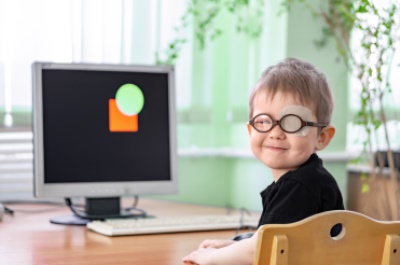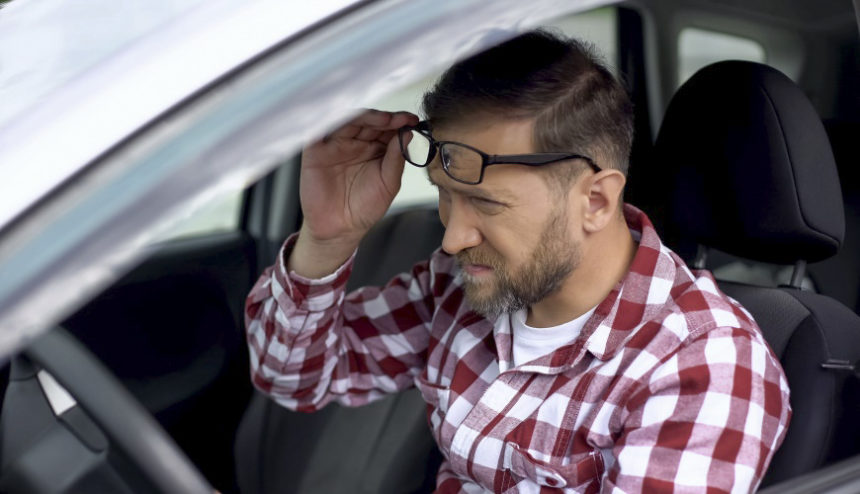By Tammy Vig, OTD, OTR/L, CLT, Occupational Therapy
Did you know that sight and vision are two different things? Sight is a person’s ability to see clearly without corrective lenses. On the other hand, vision is the brain’s ability to process what the eyes see. Vision is important because it connects us with our surroundings, keeps us safe, and is important for our learning and brain function. The eye may be small, but it is amazing to realize how much it affects the brain. The good news is that vision, the brain-eye connection, can be improved with practice with vision therapy.
How does normal vision work? First, the eyes take a picture of an object. Next, that message is sent to the brain through optic nerves. The brain recognizes the image and integrates it with other sensory messages (hearing, touch, smell, taste). The brain then responds to the sensory input by sending a motor response to the appropriate part of the body.
Vision Impairments
When people experience visual impairments, every aspect of life is affected. For example, they could have trouble reading or driving, suffer from headaches or sensitivity to light, or experience blurry or double vision. Occupational therapists can help children and adults with poor visual skills improve the optical system’s functioning and strengthen the brain-eye connection. Vision therapy is a process meant to teach the brain how to use your eyes more effectively, accurately, and efficiently.
Vision impairment is one of the top 10 disabilities among adults over age 18. Aging is the leading cause; most visually-impaired persons are over age 65. Other causes can include stroke, traumatic brain injury, or a concussion. Vision therapy in adults helps improve functions of daily living. These include driving, reading, cooking, taking medications properly, and more.
 Children also can be affected by visual impairment. Cortical visual impairment (CVI) affects areas of the brain that process visual information. Children with CVI have eyes that can see, but the brain’s visual center has difficulty interpreting. For example, they may have trouble recognizing faces, interpreting facial expressions, or perceiving depth. They also have a preference for movement and can typically see objects better when in motion. In addition, they often have better peripheral vision than direct vision, leading to a lack of direct eye contact or “social gaze”. CVI can be mild or severe and may fluctuate widely day-to-day, even minute-by-minute. Partial recovery is possible over time with treatment. Children may also have an ocular visual impairment which affects the eyes and can get in the way of learning. Children and teens can have trouble with vision after a concussion, so being watchful of visual impairments is essential.
Children also can be affected by visual impairment. Cortical visual impairment (CVI) affects areas of the brain that process visual information. Children with CVI have eyes that can see, but the brain’s visual center has difficulty interpreting. For example, they may have trouble recognizing faces, interpreting facial expressions, or perceiving depth. They also have a preference for movement and can typically see objects better when in motion. In addition, they often have better peripheral vision than direct vision, leading to a lack of direct eye contact or “social gaze”. CVI can be mild or severe and may fluctuate widely day-to-day, even minute-by-minute. Partial recovery is possible over time with treatment. Children may also have an ocular visual impairment which affects the eyes and can get in the way of learning. Children and teens can have trouble with vision after a concussion, so being watchful of visual impairments is essential.
Vision Therapy
As we take a deeper look into the brain-eye connection, vision therapy’s most common treatments are visual perception and convergence insufficiency. Visual perception allows a person to recognize and identify shapes, objects, and colors and judge the objects’ size, configuration, and spatial relationship. When perception is off, people may not be able to pick up a pen easily or may trip on the stairs. Visual-motor skills coordinate how the brain processes the information perceived through sight. This can be assessed by using fine, gross, and sensory-motor skills. Interventions can improve visual attention, search and speed, and efficiency in processing. Convergence insufficiency is another area of focus and is an eye condition that affects how eyes work together when looking at nearby objects. Issues with this can cause blurry or double vision when looking at things up close, such as a book or phone screen.
To address visual dysfunction, occupational therapists prescribe eye exercises and tasks. Adaptations such as tinted glasses, sunglasses, magnifiers, or environmental modifications may also be recommended. Examples of adaptations for low vision include using a reader, putting dots on frequently used appliances, increasing lighting, and using colored tape to provide contrast on steps to prevent falls.
Talk with your health care provider or eye doctor if you have any concerns about your vision. Occupational therapists are experts in helping people perform the activities they need and want to do every day.
What is Occupational Therapy?
Occupational therapy, or “activity therapy,” helps people of all ages safely and effectively participate in their daily tasks after an injury, illness, or disability. Vision therapy is but one small portion of occupational therapy.
By taking the full picture into account—a person’s psychological, physical, emotional, and social make-up—occupational therapy assists people in:
- Achieving their goals
- Functioning at the highest possible level
- Concentrating on what matters most to them
- Maintaining or rebuilding their independence
- Participating in the everyday activities that they need to do or that simply make life easier
Occupational therapists and occupational therapy assistants are experts in helping people perform the occupations they need and want to do every day. (AOTA, 2022)


